Honda Civic Si Vs Volkswagen Golf GTI Vs Hyundai Elantra N: Sport Compact Shootout

Fun, affordable, practical. It’s the car version of the Iron Triangle, but with sport compact cars, you don’t have to pick two qualities. Here, you’ve got all three.
The Honda Civic Si and Volkswagen Golf GTI are hardly unknowns. They’ve been on our roads, and in our hearts, for decades, melding compact car usefulness with added turns of speed and poise. Both saw new generations touch down in 2022, so naturally we’d have to get them together.
Then Hyundai crashed the party. The Elantra N is an altogether wilder proposition, the most hardcore small sedan we’ve seen. It doesn’t try to hide it, either. Pumped up and featuring one of the best four-cylinder soundtracks out there, The Elantra N nonetheless continues Hyundai’s tradition of serious value for money. We already know it’s good on the track, but can it impress in the real world?
Get a Quote on a New 2022 Honda CivicSince a big part of the appeal of these three sport compacts is their daily livability, we each spent a week with them; I in the Civic, managing editor Mike Schlee in the GTI, and contributing writer Jeff Wilson in the Elantra N. Then we spent a day together to sample all three along the sorts of roads they were built for.
2022 Honda Civic Si — 3rd Place
It’s always tough when a new model ends up at the back of the pack in a shootout. I had high hopes for the Civic Si when I picked it up at the start of the week. It looks good, if low key. The six-speed manual is a complete joy to row. The inherent goodness of the regular Civic, which won our 2022 AutoGuide Car of the Year title, makes it a smooth everyday ride.
And then, dear readers, I actually drove the other cars.
Evolution, Not Revolution
Honda stuck to the Si script for this latest model. It retains the 1.5-liter turbo four-cylinder of the previous model, though the quoted peak horsepower is down by 5, to an even 200 hp. Torque sits at 192 pound-feet.
This time around, you can only get your Si in four-door sedan form. The Civic coupe rolled off into the big parking lot in the sky back in 2020, and the five-door hatchback tops out with the 180-horsepower Sport Touring trim. If you love that shape’s added practicality, you have two other options as well: the more luxurious Acura Integra, reborn for 2023 on the same platform; or the hardcore Civic Type R, which will debut later this year.
Best Shifter of the Bunch
Unlike the other two cars, the Civic Si comes with just one transmission option: the six-speed manual. Thankfully, it’s easily the best of the bunch, with a tight, mechanical feel that makes it a tactile delight. The throws are short, but require more effort than in either the VW or Hyundai. There’s not a lot of weight to the clutch pedal, but there is a very clearly defined bite point, so it’s simple and intuitive.
Honda has tweaked the shifter for the latest Si, borrowing bits and pieces from the outgoing Civic Type R. A rev-matching system takes care of the heel-and-toeing for you, perfectly blipping the throttle between shifts. A lighter flywheel is meant to address the rev hang that plagued the previous Si. It’s better here, but the 2022 model still holds the revs high on changes.
More of a Touring Plus
The Civic Si features 50 percent stiffer springs than the Touring, which sounds like a recipe for a fidgety ride. In practice it’s alright; stiff, yes, but still reasonably compliant over rough surfaces. The non-adaptive suspension ends up feeling floaty through the curvy backroads north-west of Toronto however. The Civic only has one card to play here. The VW has the most breadth, with a comfort mode arguably just as everyday-good as this. Make a few adjustments, and it hunkers down into attack position. The Elantra goes hard all the time, so much so that you want to get it a few bottles of Gatorade for the inevitable come-down—but it never arrives. Yet even its laidback modes aren’t too far removed from the relaxed gait of the Civic.
In Canada, the Si only comes with all-season rubber. So while it features 235-width rubber like the others, outright grip levels were much lower. Combined with the overboosted steering, the Civic could be hard to read over a challenging set of corners, further lowering its rate of progress. American buyers can opt for summer tires for a piddling $200, which is a no-brainer as far as we’re concerned.
We expected the Si to feel a little down on power. Forfeiting a full 97 lb-ft to the Elantra means it simply couldn’t keep up with the others in a straight line, no matter how quickly we rowed that snick-snick gearbox. There’s not much drama coming from those two small pipes, either. That said, the Civic is still usefully muscular in day-to-day driving.
Spending 400 miles (640 km) with the Civic, it was easy to appreciate the everyday goodness of the package. Those of us who haven’t succumbed to SUV-itis will appreciate the super-low seating position, and the added bolstering of the Si’s grippy cloth seats. The interior is the best of the three too, all high-quality materials and tight finishes. Space in the back is right around that in the Elantra, though the Civic’s seats are more comfortable, and the low window line makes it feel more spacious. Trunk space just eclipses that of the Hyundai, and the Civic doesn’t have a web of bracing behind its fold-down seats. It’s all very sensible, the Si.
The Integra Angle
There’s a sneaking suspicion that the Civic Si is intentionally hamstrung to protect its reborn sibling, the 2023 Acura Integra. As luck would have it, I had driven the ‘Teggie the week before this comparo. Acura’s targeting a different part of the market there, hunting Audi A3s and BMW 2 Gran Coupes, but the fact remains that on paper, these two are closer than any Civic and Integra have been before. Same engine, same transmission (plus a CVT option for the Integra)—you get the idea.
SEE ALSO: 2023 Acura Integra First Drive Review: Five AliveIt seemed like an odd choice for Honda to ditch the previous Si’s adaptive dampers here. Then the Integra debuted with them, and suddenly it made more sense.
Unfortunately, the comparative lack of progress has the Civic two steps behind the other cars. The VW builds on its consummate all-rounder reputation, while the Elantra offers performance closer to Golf R and Civic Type R levels at a price in-line with GTI and Si.
Can’t Hang
I’d like say it was a close fight. But it wasn’t. The Civic Si’s oddly over-boosted steering and inert handling when the road gets fun put it at an early disadvantage that it never fully recovered from. It does have the nicest cabin and the best shifter—not to mention a significant price advantage. With an as-tested price of $28,990 ($35,530 CAD), the Si skews far closer to an everyday ride with a hint of spice, as opposed to the fun-first feel of the other two.
We all agreed that summer tires, an extra 30 horsepower or so, and less rev hang would be enough to put the Civic on par with the others. Better? Maybe, maybe not, but as is, the only reasons we could see someone picking the Civic would be budget or brand loyalty. It’s an unexpected miss after the great regular sedan and hatchback. We look forward to the Type R to hopefully bring back some of that sporty Civic shine.
2022 Volkswagen Golf GTI — 2nd Place
This is a tale of indecisive decisions. When discussing the ultimate victor of this comparison, we flipped and flopped at least a half dozen times before crowning the eventual champion. Even with our absolute final decision, there are still asterisks and caveats attached to results. But more on that later.
The Volkswagen Golf GTI is a sporty compact originator. It’s one of the first hot hatches ever fathomed and is fast approaching its 50th anniversary. For the 2022 model year an all-new GTI, dubbed the Mk8, arrived.
Punching Above Its Weight Class
Not much of the GTI’s main philosophy has changed with this latest generation. What Volkswagen did do is take everything that has made the GTI such an icon and made it even better. Starting under the hood remains a 2.0-liter four-cylinder turbocharged engine. But it now makes 241 hp and 273 lb-ft of torque: a healthy increase over the 2021 Golf GTI.
What’s more, is the way the car puts the power to the pavement. Anyone who has driven a modern GTI will know that the cars always feel more powerful than the numbers suggest, and the same is true with the Mk8. Despite a 35 hp deficit to the Elantra N, none of us felt the GTI to be any slower in a straight line. It was a near dead heat between the two. And the more subdued exhaust note from the GTI won’t anger your neighbours while still providing a pleasing soundtrack.
Manuals Still Rock
Transmission choices remain the same for 2022, with a six-speed manual as standard equipment and a seven-speed dual-clutch automatic optional. Our test car thankfully came with the optional six-speed manual. Despite us all voting it to be the worse transmission here, it’s still a very good unit.
The clutch is on the light side, but still the stiffest of the trio. It also lacks the engagement feel of the Civic or Elantra—when exactly the gear does grab takes some time to learn. That stated, it is very easy to engage and limits lurching when the sweet spot is missed. In fact, the GTI is a very hard car to stall thanks in part to the torquey engine.
SEE ALSO: Hyundai Elantra N Line vs Volkswagen Jetta GLI Comparison: Healthy CompetitionBest Balancing Act
Moving on from the engine and transmission, the GTI only gets better. The balance of comfort and handling is unmatched by the other two vehicles here. The suspension is nearly as compliant and comfortable as the Civic Si, yet the GTI still hangs on in corners like the manic Elantra N. This is achieved thanks to two main components, the VAQ/XDS+ limited-slip front differential system and the DCC adaptive chassis control.
The VAQ/XDS+ is an electronic front differential system that helps increase handling for the front-wheel drive Golf GTI. It’s programable within the drive mode selector and can be set through several levels of increasing performance.
Set it to a more aggressive mode, and it works as advertised. By using the outside tire to pull the car around high-speed corners, the GTI feels like it grips harder as speeds increase. It would be easy to fool passengers into thinking this Golf was all-wheel drive. Of course, the optional 235/35R19 summer tires go a long way to help exploit this differential trickery.
The DCC adaptive chassis control, which adjusts the electronic dampers 200 times per second, also assists in getting every ounce of performance out of the Golf’s chassis. But even when in Sport mode, it never delivers a punishing or harsh ride. Road imperfections are swallowed up with ease and in Eco mode, rivals that of most contemporary compact cars.
Small But Spacious
The Volkswagen is easily the smallest vehicle here. At just 168.8 inches (4,287 millimeters) in length, it’s over a foot shorter than the Honda or Hyundai. That leads to the smallest rear seat legroom of just 35.0 inches (889 mm).
Thanks to its boxy shape though, it offers up the most rear headroom of 38.1 inches (968 mm). During our real-world testing, our six-foot tall tester found the GTI to have the most comfortable rear seat out of the trio in this comparison.
A Gateway Car
For better or worse, the Volkswagen Golf GTI is the most technologically packed and premium car in attendance. As tested, it’s stuffed full of tech that takes some time to learn, but once understood and customized, is well laid out. Some controls are not intuitive, but neither the Civic nor Elantra are as programable as the GTI.
The gauge cluster alone has five different design themes that can be further tailored through dozens of information configurations. Most surfaces and trim pieces look upscale. Even the optional plaid seats still have a certain charm.
We began to refer to the GTI as a gateway car. It’s the steppingstone for those who aspire to own the likes of an Audi S3 or Mercedes-Benz A 45 AMG but haven’t quite got the means to afford one.
So Why 2nd Place?
The 2022 Volkswagen Golf GTI is well-crafted balance of power, refinement, comfort, utility, and handling. It’s really a fantastic all-around one-car solution. We all agreed it was our favorite car in the test. So why didn’t it win? Simply put, pricing.
As tested, the Golf GTI Autobahn comes in at $39,425 USD after destination charges. That’s a $6,000+ premium compared to the Elantra N. Granted, the GTI comes in many trims and begins at $30,975 USD, but that one lacks the summer tires, DCC adaptive chassis control and other technology tidbits at that price. Would we still love the comfort and handling balance of the GTI in either S or SE trim? We don’t know.
But Canadians, there’s a big asterisk to these results. For those living in the great white north, the Volkswagen is the champion of our comparison. The Golf GTI Performance rings in much closer to the price of the Elantra N, especially if the optional Panoramic sunroof is skipped. At a price of $40,745 CAD after destination charges, the Golf GTI is a mere $1,821 CAD more than Hyundai’s performance sedan. In our opinion, that small price penalty is well worth it for the superior car.
2022 Hyundai Elantra N — 1st Place
Two-thirds of our expert panel would rather live with the GTI than the Elantra N, which probably speaks more to our advancing age than any overt deficiencies with the Hyundai. Still, the N is very much like that friend we all love to party with who’s brash, loud, and a bit crazy, and while they’re always up for a good time, sometimes they can be just a bit much.
The Elantra N is brash, loud and a bit crazy, too, but it’s also pretty addictive.
Serious Handling Hardware
Hyundai has proven that it’s got the engineering chops to produce genuine performance cars with excellent handling. We first saw it with the Veloster N, and now the larger, more sensible Elantra sedan gets the full N treatment, and clearly the N cars deserve our driving-enthusiast attention. While simply sticking the big summer-spec Michelin Pilot Sport 4S rubber on (245/35R19) would create impressive traction on its own, that’s only a small part of the handling story.
Hyundai has given the Elantra N an electronically-controlled suspension, that even in Normal mode is still rather stiff. Stabilizer bars are added front and rear, including a bright-red lattice work that segments the trunk from the cabin, even when the single-piece rear seat is folded forward. The car corners flat and the steering feels quick and decently communicative, but it’s the electronic limited slip differential that really helps the N maintain its composure, even when driven with significant gusto around tight corners. On one challenging downhill curve in particular, the GTI and Elantra managed to harness all their suspension sorcery to grip-and-go while the softer Civic became slightly upset and started to rotate its rear end.
SEE ALSO: 2022 Hyundai Kona N First Drive Review: Pint-Sized Pocket RocketBoastful Numbers
It’s the powerplant that really sets the Elantra N apart from the other two in this test. The 2.0-liter, turbocharged four-cylinder throws down an impressive-on-paper 276 horsepower and 289 lb-ft of torque, with an overboost function that squeezes an extra 10 ponies when called upon for brief gallops. The N is properly quick, and can launch easily and pull hard, but on the road, all that extra power seems mostly boastful since we found it no quicker than the GTI despite the VW’s 35 hp deficit.
Exhaust cannons situated beneath the rear bumper are large enough to be used for cantaloupe storage, and unlike so many cars these days, they aren’t just make-believe fashion cut-outs. Upon start-up and even at idle, the Elantra N emits a gruff, loud and sinful burble, and that’s with Normal mode selected. Select Sport and it gets borderline silly, especially pulling hard up through the gears. It’s easily the best four-cylinder music we’ve heard since the Fiat 500 Abarth or Alfa 4C.
Rev-Matched Rowing
The six-speed manual’s shifter offers solid action, but the throws feel long and widely spaced compared to the Honda’s tidy set-up. Still, it’s good enough that we’d surely pick it over the dual-clutch eight-speed automatic that Hyundai also offers in the N. There’s a big red button on the steering wheel to activate the rev-matching function, a triviality that often has those who are adept at heel-and-toe techniques rolling their eyes. It works really well, though, and unlike the Honda, it’s nice that it’s offered when desired, and defeatable when it’s not.
SEE ALSO: 2022 Hyundai Elantra N First Drive Review: Big Grin MachineDemanding in Daily Life
There were times we became hyper-aware of the flatulent exhaust, red accent stripe, and gaping maw of a grille, that surely prompted passersby to presume we were amidst some sort of midlife crisis as we backed noisily into parking spots.
And even if the noise, appearance and stiff ride are tolerable, the seats are firm and very aggressively bolstered, which can make climbing in and out of the Elantra a bit tricky. That said, we all agreed the N’s seats were supportive and comfortable once you managed to get into them, and the ultra-suede finish was grippy and stylish. There are plenty of other parts of the cabin where hard, shiny plastics are prolific, reminding occupants of the N’s humbler Elantra origins.
The Elantra’s interior is sensibly laid out with a series of physical buttons, plus proper volume and tuning knobs accompanying the 10.25-inch touch screen infotainment system. Like the other two cars, there’s an all-digital gauge display too, featuring crisp, graphic dials that change color and style based on drive mode selected.
As the longest and widest car of the trio, it’s unsurprising that its passenger space is plentiful, however, the raked roofline and chunky c-pillars can trigger some claustrophobic episodes; a sensation that’s absent from the smaller, but boxier GTI. The trunk space is also smaller than the other two cars, too, marginally limiting its overall functionality.
A Narrow Victory
The performance gap between the Volkswagen and Hyundai is much smaller than expected, but the personalities are entirely different. The Elantra N is the most outlandish car here by measure of appearance and dynamics. It’s playful, aggressive and highly capable, but it also demands the most of its driver in a way that the other two cars simply go about their tasks quieter and more efficiently. Sporty cars—even ones meant for daily life—are meant for a buyer who appreciates the higher level of engagement that comes with a genuine performance machine. When it’s as solid a value as the $33,245 ($39,124 CAD) Elantra is, it becomes a pretty compelling case.
The Elantra N compromises far less in the name of performance than the other two cars here, and for enthusiasts, that, and the ear-to-ear grin this car produces, is what earns it a top spot.
Become an AutoGuide insider. Get the latest from the automotive world first by subscribing to our newsletter here.

Kyle began his automotive obsession before he even started school, courtesy of a remote control Porsche and various LEGO sets. He later studied advertising and graphic design at Humber College, which led him to writing about cars (both real and digital). He is now a proud member of the Automobile Journalists Association of Canada (AJAC), where he was the Journalist of the Year runner-up for 2021.
More by Kyle Patrick



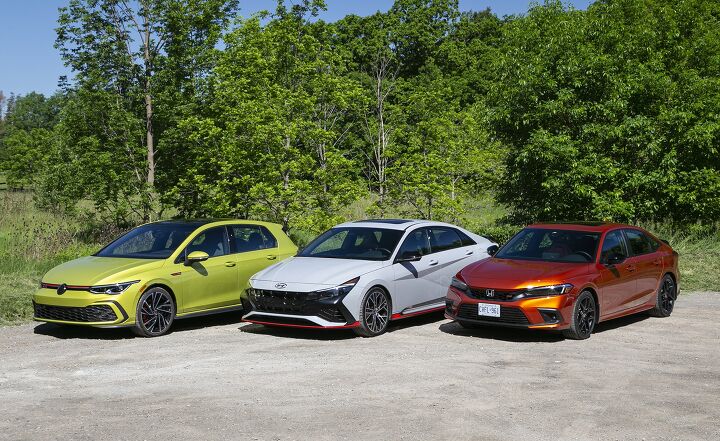



































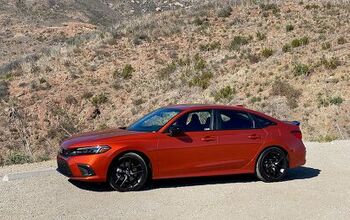




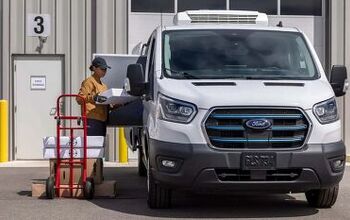


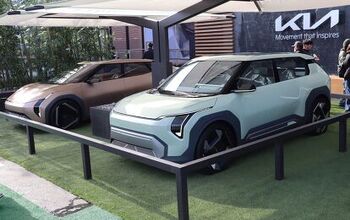


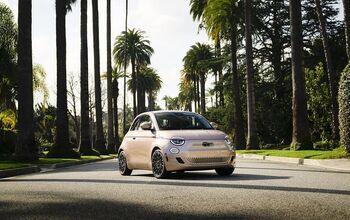

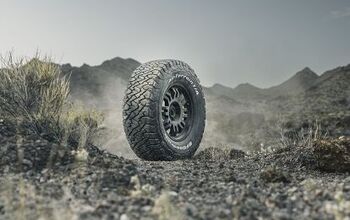
Comments
Join the conversation
People - Hyundai/Kia stole the best engineers and designers from VW and other german manufactures a few years ago, this is just the fruit of their labours, the suspension and engine advancements in these cars are head and tails over what they used to be - they used to be a good value if slightly boring performance and detached steering and now they're fun AND have a 100k warranty - bites VW and honda in the A** hard man, just accept it and understand that Hyundai isn't a 3rd place anymore but really just tied for 1st place nowadays, now if only they could fix their dealer network because those salesguys are the pits. unfortunately it seems they got their crap together just in time to abandon ICE and go electric like everyone else.
Great review, first time I read your website, good to see some quality Canadian content. I am looking at replacing my mk7.5 Gti and it looks like it is still the best do it all. I guess an ecu and tcu stage 1 might do the trick for some novelty for me. Btw, I own the mk6, mk7 and in term of reliability the 7.5 has been bullet proof and the most reliable VW I owned. I would guess the mk8 will be as well, beside the infotainment, the majority of the components have been there for a long time.